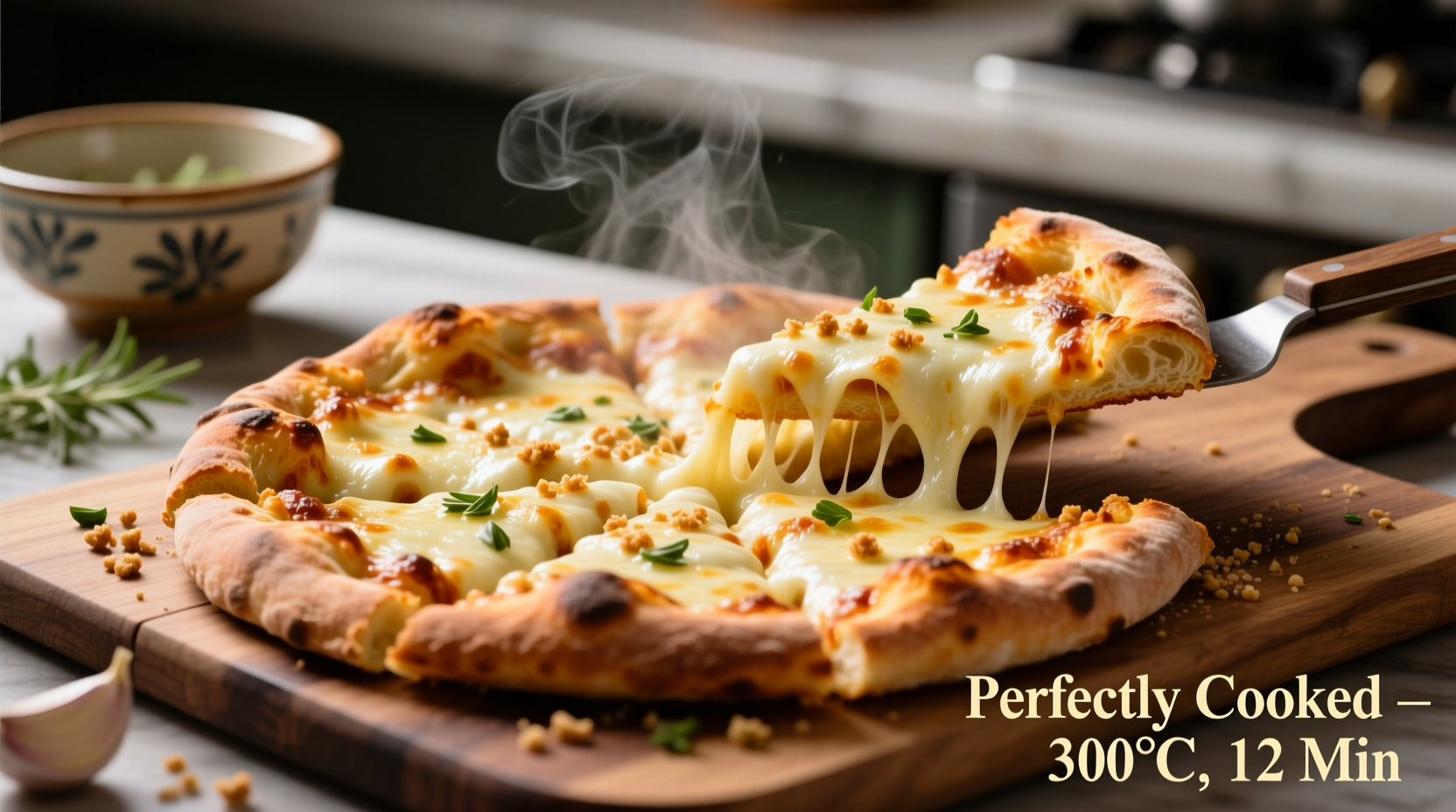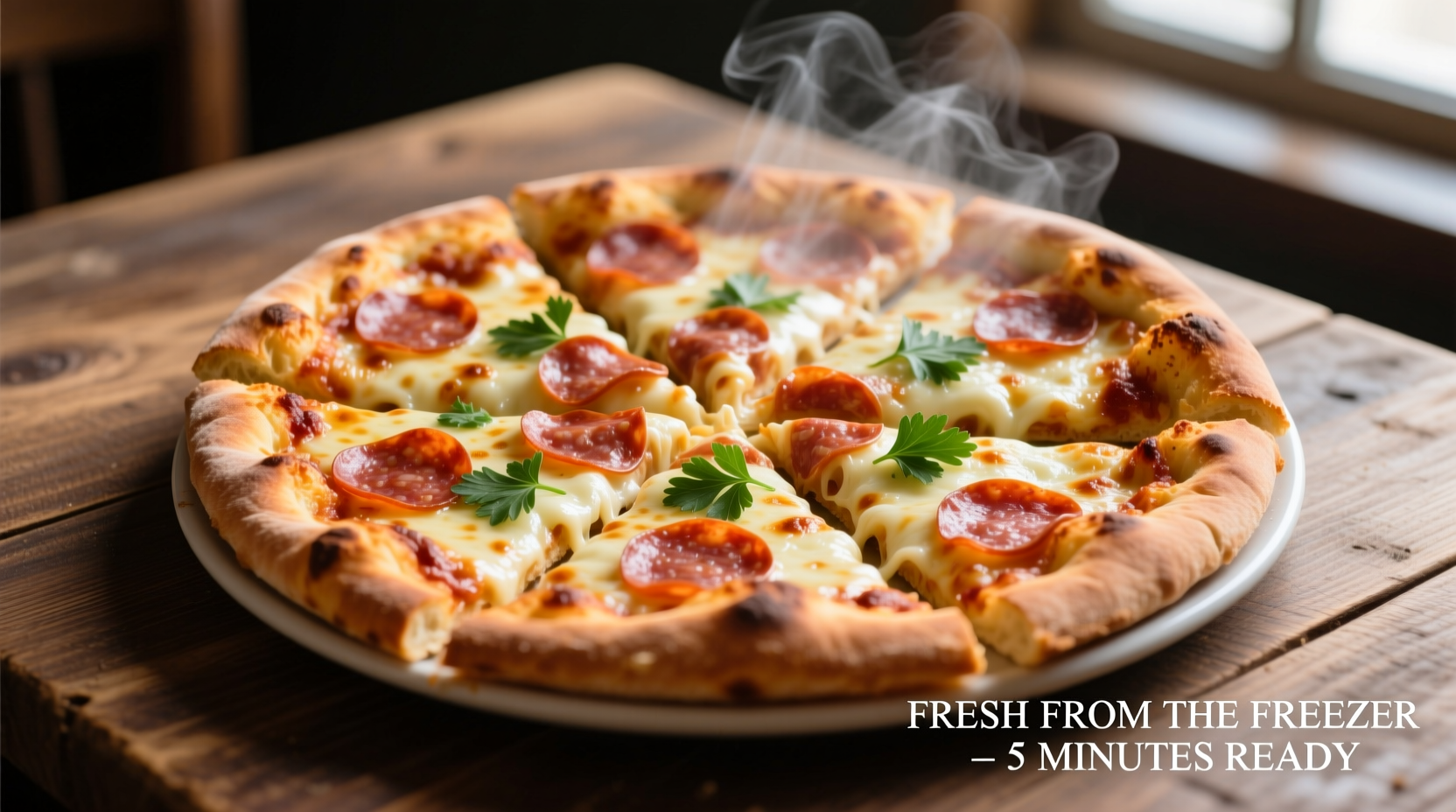Discover how to transform your frozen garlic bread pizza from mediocre to magnificent with science-backed techniques that professional chefs use. This comprehensive guide reveals the exact temperature control methods, timing strategies, and flavor enhancement tricks that turn a simple frozen product into a restaurant-quality meal in under 20 minutes.
Understanding Your Frozen Garlic Bread Pizza Product
Not all frozen garlic bread pizzas are created equal. The quality varies significantly based on manufacturing processes and ingredient composition. Most products fall into three categories:
| Product Type | Key Characteristics | Best Cooking Method |
|---|---|---|
| Basic Value Line | Thinner crust, minimal toppings, lower cheese content | Direct oven rack placement |
| Premium Gourmet | Thicker artisanal bread, premium toppings, higher cheese ratio | Baking sheet with parchment paper |
| Health-Conscious | Whole grain bread, reduced sodium, vegetable-forward toppings | Lower temperature (350°F), extended time |
Reading the nutrition label provides crucial information beyond calories. Check for the garlic concentration level - products with "garlic powder" as an early ingredient typically deliver more consistent flavor than those listing "natural flavors" first. The USDA Food Safety and Inspection Service recommends verifying that cheese ingredients list pasteurized milk products for safety (USDA FSIS).
Preparation Essentials: Before You Start Cooking
Proper preparation significantly impacts final results. Never skip these critical steps:
- Thawing considerations: Most frozen garlic bread pizzas achieve best results when cooked directly from frozen. Partial thawing causes sogginess as ice crystals melt during cooking. The Academy of Nutrition and Dietetics confirms that cooking frozen foods without thawing preserves texture integrity (AND Food Storage Guide)
- Equipment check: Use an oven thermometer to verify actual temperature - most home ovens have 25°F variance from displayed settings
- Surface preparation: Line baking sheets with parchment paper, not aluminum foil, which can cause uneven browning
The Perfect Cooking Method: Step-by-Step Guide
Follow this professional technique for flawless results every time:
- Preheat oven to 375-400°F (check package instructions for specific temperature)
- Place pizza directly on middle oven rack for optimal air circulation
- Set timer for 8 minutes (half the recommended cooking time)
- Rotate pizza 180 degrees for even cooking
- Continue baking 4-7 minutes until cheese bubbles and edges turn golden brown
- Remove and let rest 2-3 minutes before slicing
This method prevents the common issue of burnt edges with undercooked centers. The critical temperature range for optimal Maillard reaction (browning) in garlic bread occurs between 285-320°F, while cheese melting requires 130-150°F. Proper oven temperature balancing creates that perfect golden crust with fully melted cheese.

Pro Tips for Maximum Flavor Enhancement
Elevate your frozen garlic bread pizza with these chef-approved techniques:
- Timing is everything: Add fresh basil or arugula during the last 2 minutes of cooking to preserve vibrant flavor and color
- Crispiness boost: Lightly brush crust edges with olive oil 5 minutes before completion for extra crunch
- Flavor layering: Sprinkle additional garlic powder and parsley immediately after cooking for fresh garlic aroma
- Moisture control: If adding wet ingredients like fresh tomatoes, pat them dry first to prevent sogginess
Contextual Limitations: When Standard Methods Fail
Certain situations require modified approaches:
- High-altitude cooking: Above 3,000 feet, increase temperature by 15-25°F and reduce time by 5-8 minutes due to lower atmospheric pressure
- Convection ovens: Reduce temperature by 25°F from standard recommendations
- Thin-crust varieties: Cook directly on oven rack without baking sheet for maximum crispness
- Extra-topping versions: Cover edges with foil during first half of cooking to prevent burning
Serving and Storage Best Practices
Maximize enjoyment and minimize waste with these guidelines:
- Serve immediately after the 2-3 minute resting period for optimal texture
- Pair with a light arugula salad with lemon vinaigrette to balance richness
- Store leftovers in airtight container at 40°F or below for up to 3 days
- Reheat in oven or air fryer (not microwave) at 350°F for 5-7 minutes for best results
Troubleshooting Common Issues
Solve these frequent problems with targeted solutions:
- Soggy center: Place pizza directly on oven rack instead of baking sheet for better air circulation
- Burnt garlic: Reduce temperature by 25°F and extend cooking time slightly
- Uneven melting: Rotate pizza 180 degrees halfway through cooking cycle
- Hard crust: Lightly cover with foil during last 3-5 minutes of cooking
Nutritional Considerations
Average nutritional profile per serving (1/4 pizza):
- Calories: 280-350
- Protein: 10-14g
- Carbohydrates: 35-45g
- Fat: 10-15g (saturated fat varies by cheese type)
- Sodium: 400-700mg
For healthier options, look for products with whole grain bread bases and vegetable-heavy toppings. The Dietary Guidelines for Americans recommends balancing such meals with additional vegetables to increase fiber content (DGA 2020-2025).











 浙公网安备
33010002000092号
浙公网安备
33010002000092号 浙B2-20120091-4
浙B2-20120091-4